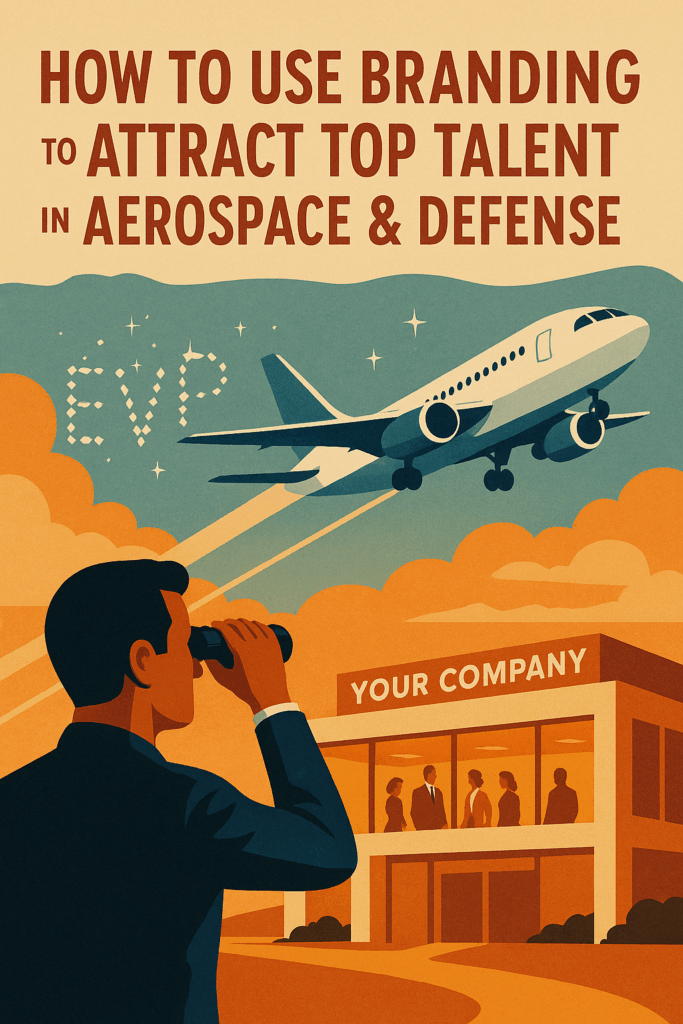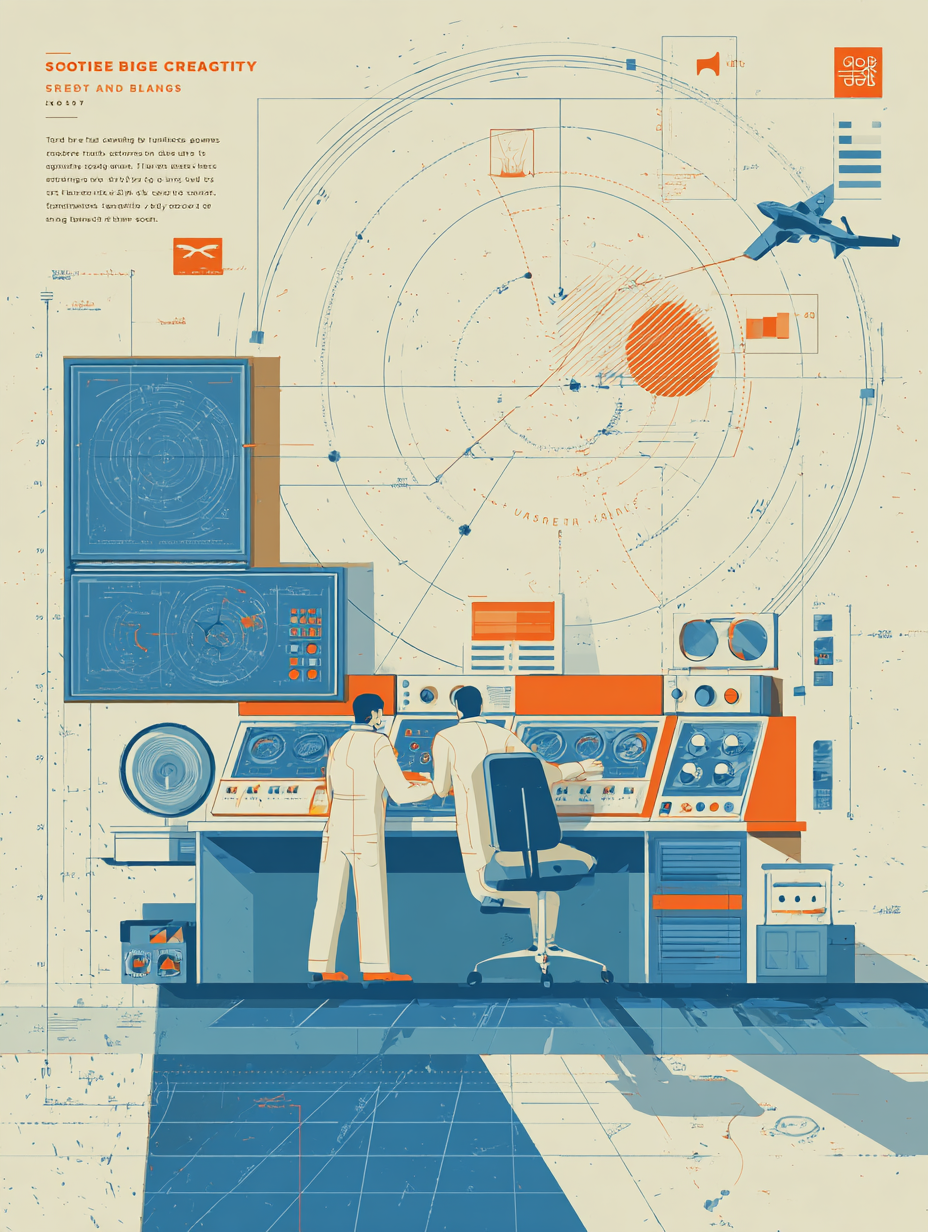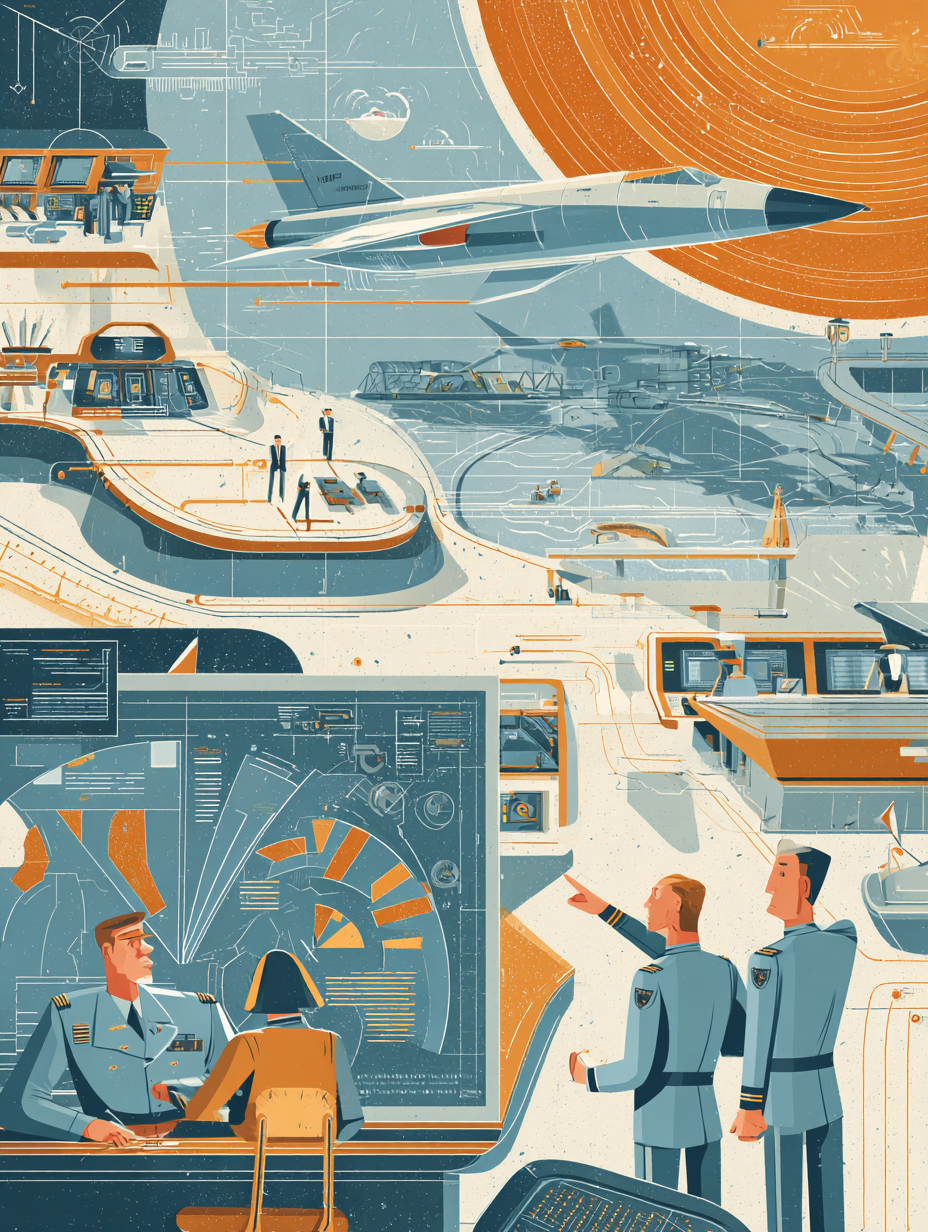You’re building the next big thing in aerospace or defense—maybe it’s cutting-edge AI for threat detection or satellite tech that redefines real-time intel.
But here’s the problem: you can’t find the right people to bring it to life.
It’s not because the talent isn’t out there—it’s because your employer brand isn’t cutting through the noise.
In an industry where government contracting, top-secret clearances, and fierce competition define the game, attracting top talent takes more than a killer mission.
It takes a brand that inspires, informs, and convinces.
Truth is, even if your tech can change the world, if your company doesn’t look like a place worth joining—if your message doesn’t resonate with the right candidates—it won’t matter. You’ll lose out to companies like Lockheed Martin that have mastered the art of brand-driven recruitment.
That’s where I come in. I’m Viktor Ilijev—a strategist and branding consultant with over 13 years in the trenches. I’ve helped build employer brands and pitch strategies that have brought in over $500 million in business and talent alike.
In this guide, I’ll walk you through exactly how to craft a high-authority, emotionally intelligent employer brand that attracts top-tier aerospace and defense talent, even in the most competitive markets.
Why Employer Branding Matters in Aerospace & Defense
In the world of aerospace and defense, your employer brand shapes how current and potential employees perceive your organization.
It tells the story of your company culture, your values, and what it feels like to be part of your team.
And in a sector defined by security clearances, classified projects, and government contracting, that perception can make or break your ability to attract and retain top talent.
At its core, an employer brand is the sum of your company’s employee value proposition (EVP)—the tangible and emotional benefits someone experiences by working with you.
A strong EVP translates to high employer brand attractiveness, which directly impacts talent retention, turnover rates, and your ability to source right-fit candidates.
Why is this so critical in defense and aerospace?
Because the talent pool is narrow, and the stakes are high. Hiring for roles that require top-secret clearances, specialized tech talent, or military backgrounds involves long hiring cycles, rigorous vetting, and a very specific kind of professional alignment.
Candidates don’t just want a job—they want a purpose-driven workplace that aligns with their skills, values, and mission.
With this in mind, your employer brand must do two things:
Speak to the unique motivations of aerospace and defense professionals—national purpose, innovation, and loyalty.
Compete with heavyweights like Lockheed Martin, Raytheon, and Northrop Grumman, who have fine-tuned their brands to dominate the government contractor talent market.
Lockheed Martin as a Benchmark
When it comes to building an attractive employer brand in this space, Lockheed Martin sets the standard.
This American global aerospace and defense giant isn’t just known for advanced technologies—it’s renowned for its brand identity that resonates with engineers, veterans, and mission-first professionals.
So, what makes Lockheed a magnet for top talent?
First, they deploy purpose-driven messaging that connects deeply with their audience.
Whether you’re a software engineer, a systems analyst, or transitioning military talent, their brand consistently communicates one thing: your work here matters to the world. That emotional clarity is a powerful recruitment driver.
Second, they leverage employee stories to showcase the human side of defense tech.
Through blogs, video interviews, and LinkedIn posts, they humanize complex roles, celebrating innovation and the personal journeys behind the mission. This approach builds trust and relatability—two crucial factors in employer brand attractiveness.
Third, Lockheed is smart about distribution.
They amplify their employer brand through a robust recruitment marketing strategy across LinkedIn, military transition platforms, and niche defense job boards.
They tailor content for different talent personas—from recent STEM graduates to retired service members—ensuring relevance and resonance.
In essence, Lockheed Martin doesn’t just advertise jobs—they sell a career mission backed by real people, impactful work, and a compelling vision. That’s the blueprint for any defense contractor or aerospace startup that wants to compete for top-tier candidates in today’s talent market.
Crafting an Effective Employer Brand Strategy
Aligning Brand with Mission and EVP
Your employer brand is only as strong as your Employee Value Proposition (EVP)—the core promise you make to both current and potential employees.
The EVP defines the emotional and functional benefits of working with your company.
It’s where your corporate brand, employer brand image, and real-world employee experience intersect.
In aerospace and government contracting, a compelling EVP must go beyond perks and compensation.
It should reflect your mission, your impact on national security or global innovation, and the values that drive your team.
For example, Lockheed Martin’s EVP communicates not just the prestige of working on advanced defense systems, but the personal fulfillment of contributing to U.S. safety and sovereignty.
To activate your EVP and align it with your corporate culture, ensure consistent messaging across all touchpoints:
Job descriptions: Reflect mission-alignment, career progression, and clarity about clearance or project requirements.
Career site: Highlight purpose-driven projects, diversity in roles, and testimonials from military talent and top-secret cleared professionals.
Internal communications: Reinforce the brand promise daily through newsletters, leadership updates, and recognition programs.
When executed properly, a cohesive EVP strengthens employer brand attractiveness and builds a strong employer brand that resonates externally and internally.
Internal Branding and Employee Experience
Internal branding is often the hidden engine behind successful talent attraction and retention strategies.
It’s not just about values on a wall—it’s about how those values are lived daily through employee experience, feedback loops, and culture rituals.
In government contracting, where job roles can be isolated, highly classified, or embedded in external environments, cultivating a sense of belonging becomes critical.
This is especially true for military candidates, engineers with top-secret clearances, or defense-focused researchers working in siloed environments.
Without a unifying culture, these employees can quickly feel disconnected from the mission.
To build an effective internal brand:
Create employee resource groups for veterans, women in STEM, and other affinity segments.
Implement regular internal storytelling campaigns featuring frontline staff or tech innovators.
Design onboarding programs tailored to different clearance levels or aerospace project roles.
A well-nurtured internal brand boosts employee engagement, increases loyalty, and reinforces your employer brand experience in ways no ad campaign ever could.
Using Differentiation for Competitive Advantage
In a world of parity—where job titles, pay bands, and even missions look similar—differentiation is your key to standing out.
Borrowing from Blue Ocean Strategy, the goal isn’t to outperform competitors in a red ocean of sameness—it’s to create a category of one in the minds of potential candidates.
For government contractors and aerospace firms, differentiation might include:
A unique work environment designed around autonomy and rapid innovation—even within compliance-heavy contexts.
Mission-led innovation that highlights moonshot projects, classified breakthroughs, or dual-use technologies for commercial and defense applications.
Employee experience initiatives—like executive mentorship for veterans, remote-flexible cleared roles, or AI-driven training platforms.
These create both emotional and practical value that resonate with external talent, especially those weighing multiple offers or contemplating a move from the Indian Armed Forces or allied defense institutions to U.S.-based firms.
The outcome? A clearly positioned employer brand that transforms your perception as an employer from “just another contractor” to a purpose-driven, career-defining destination.
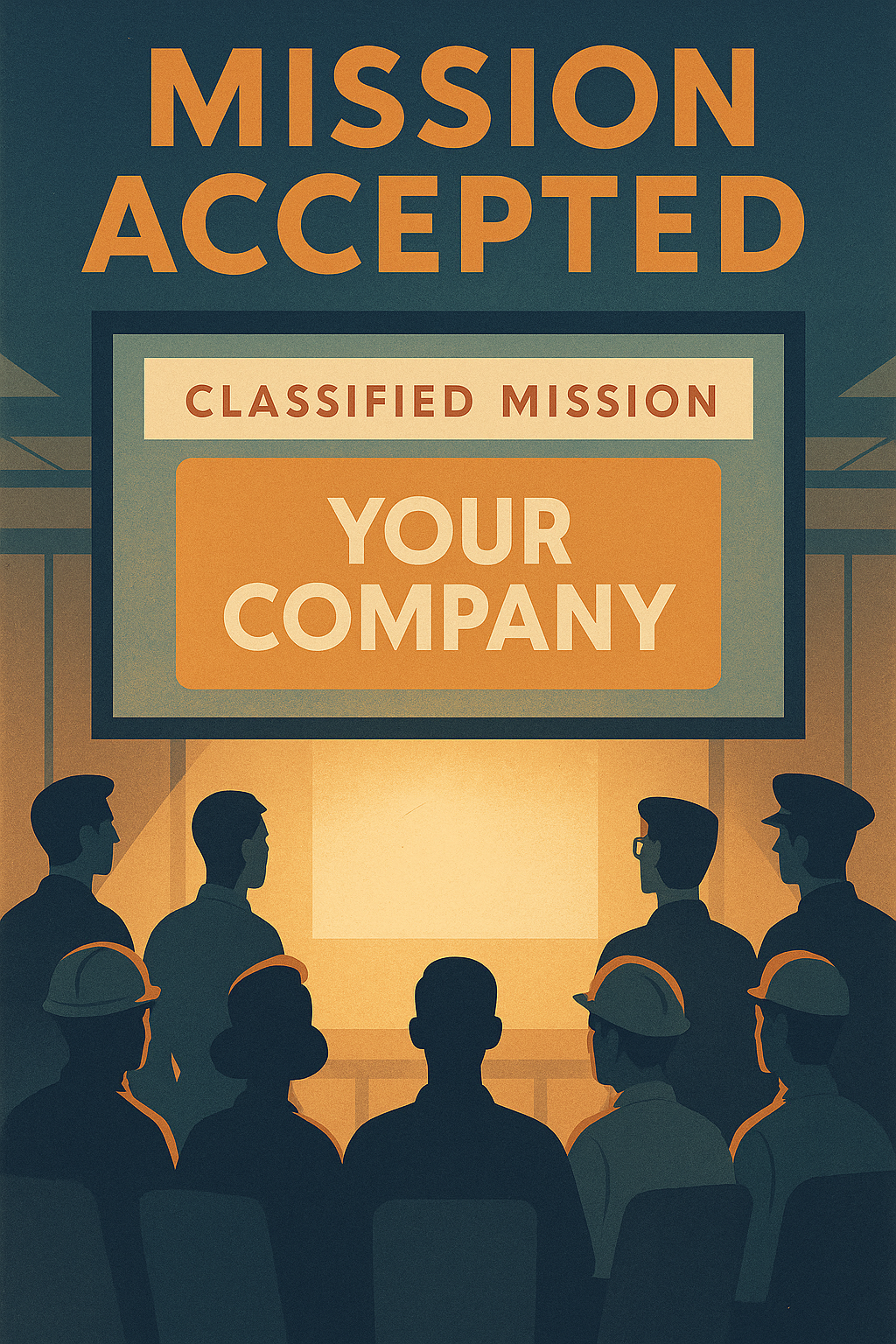
Tactics to Attract and Retain Top Talent
Recruitment Marketing Strategy
A strong employer brand is only impactful if it reaches the right people, at the right time, in the right place.
That’s where an integrated recruitment marketing strategy comes in. In the competitive fields of aerospace and government contracting, where roles often require security clearances or niche skills, casting a wide yet targeted net is key.
Adopt a multichannel approach to talent acquisition:
LinkedIn: Showcase employer brand content through employee spotlights, project success stories, and culture-driven posts.
Niche forums and job boards: Reach specialized audiences in defense tech, veteran transition groups, and STEM platforms.
Newsletters: Build a pipeline of potential applicants by distributing career updates, innovation highlights, and upcoming roles via subscription-based campaigns.
Employee advocacy: Empower current employees to share branded content, testimonials, and referral opportunities, amplifying trust and authenticity.
To stand out, your content must be real, relevant, and discoverable. Focus on authentic employer brand content—high-quality videos, case studies, and real testimonials that highlight not only what the job is, but why it matters.
And don’t forget the technical layer: implement semantic SEO and structured metadata to improve discoverability of career content across Google, LinkedIn Jobs, and military recruiting platforms. Tag roles with clearance levels, EVP highlights, and role-specific benefits to surface in long-tail search queries.
Engaging Current and Potential Employees
While attracting talent is essential, keeping them engaged across the candidate-to-employee journey is where real employer brand value is built. This means moving from transactional communication to an ongoing conversation with both current and potential employees.
One powerful tactic: embed employee stories into your communications strategy. Feature these in newsletters, microsites, and onboarding content to show real experiences across departments and clearance levels.
Additionally, showcase:
Career progression paths: Display how individuals move from analyst to leadership or from service member to lead engineer.
Tech innovation and mission impact: Communicate how each role contributes to larger national goals or game-changing solutions in aerospace.
Use data-driven insights from your HRIS to segment and personalize outreach. Speak differently to military talent seeking civilian alignment than you would to AI developers or cleared linguists. The more tailored your messaging, the more your employer brand resonates with potential candidates.
Retention Through Brand Reinforcement
Attraction means nothing without retention. Once you’ve brought talent into the fold, reinforce the values, promises, and corporate culture that brought them in.
This starts on Day 1:
Use onboarding to immerse new hires in your mission, values, and brand language.
Share leadership communications that echo your employer brand identity, not just quarterly KPIs.
Maintain that rhythm through:
Internal culture rituals: From recognition programs to hackathons or classified innovation days.
Strategic events that align internal employer branding with real experiences—such as veteran appreciation weeks, innovation showcases, or live fireside chats with leadership.
These touchpoints foster employer brand identification, deepen emotional commitment, and turn employees into ambassadors—closing the loop between talent acquisition and talent retention.
A powerful employer brand isn’t just externally visible—it’s internally lived. And in the defense industry, where employment experience often includes complex mission work and high-risk confidentiality, that brand consistency is more than culture—it’s your competitive advantage.
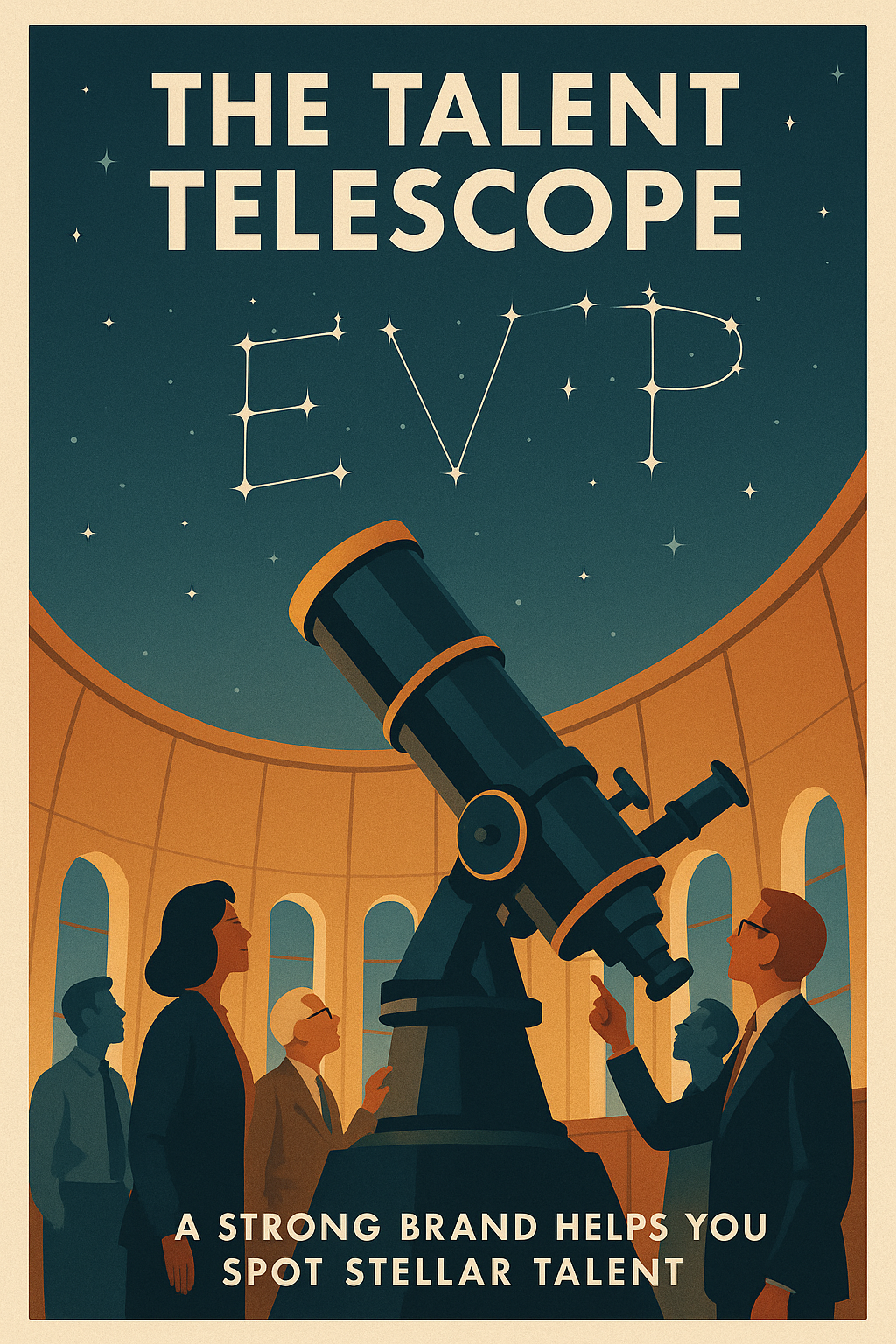
Special Considerations for Government Contracting Brands
Balancing Discretion with Visibility
For companies operating in government contracting, branding presents a unique paradox: you must promote your employer brand to compete for top talent, yet remain discreet due to the classified nature of much of your work. The challenge lies in balancing visibility with confidentiality.
You can’t share specifics about top-secret projects or sensitive technologies, but that doesn’t mean you can’t market your impact. Focus instead on:
High-level project achievements that are publicly acknowledged—awards, partnerships, innovation milestones.
Anonymized employee stories that convey the scope and significance of the work, without disclosing restricted details.
Cultural indicators—like leadership access, learning programs, or mission alignment—that reflect your corporate culture and day-to-day work experience.
Use your career site, newsletters, and LinkedIn to highlight the relationship between employer branding and purpose-driven national service. Describe how your employment experience offers not just technical challenges but a chance to contribute to global stability and U.S. innovation leadership.
By doing this, you protect your contracts and clearances while projecting a place to work that attracts the right type of candidate: skilled, motivated, and loyal.
Leveraging National Purpose and Tech Innovation
Few industries have the power to inspire the way aerospace and defense do. People don’t just work in these fields for pay—they’re drawn by patriotic purpose and the allure of solving innovative solutions for national defense.
Smart employer branding in government contracting taps into this emotional currency. Your goal isn’t just to fill roles—it’s to attract and retain talent who see themselves as mission-critical.
Here’s how:
Lead with values: Use storytelling to communicate how your work protects lives, strengthens alliances, or advances freedom.
Showcase tech innovation: From hypersonic systems to secure communications, talk about the frontier challenges your teams tackle—without disclosing sensitive methods.
Align your employer messaging with national vision: Consider how your brand reflects the priorities of the Department of Defense, NASA, or allied global forces. This reinforces legitimacy with military talent, engineers, and defense strategists.
Purpose also resonates with younger professionals who may be disillusioned by corporate jobs but hungry for meaning. Frame your company as a place to work where what you do directly impacts the safety, technology, and sovereignty of the future.
In a sector marked by unique challenges and long vetting pipelines, your ability to build a purpose-driven employer brand will set you apart from competitors—and ensure that your most critical business areas are fueled by people who believe in the mission as much as the job.
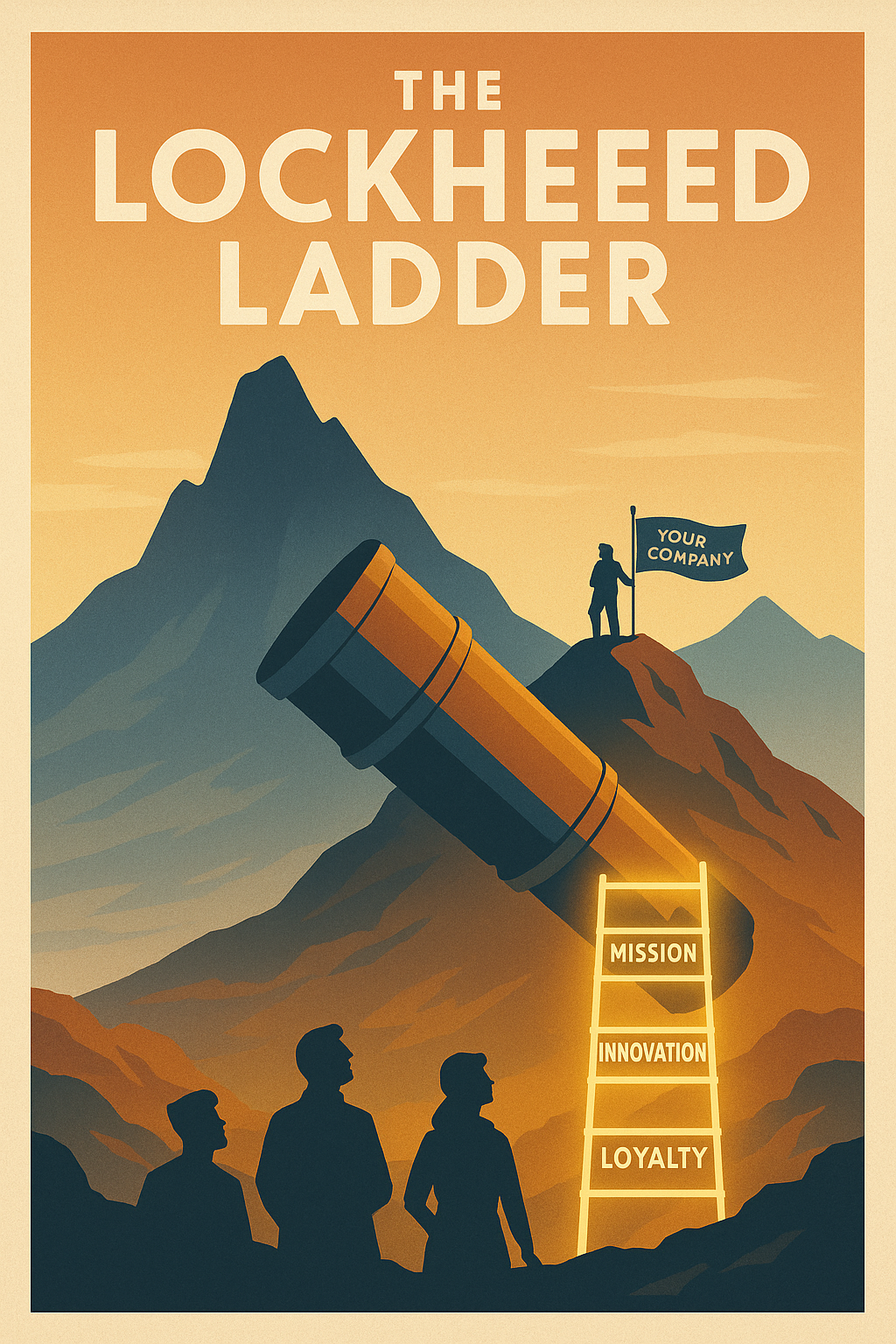
Case Study Spotlight: Lockheed Martin’s Employer Brand Flywheel
When it comes to building a resilient, scalable, and strategically aligned employer brand, few organizations do it better than Lockheed Martin. As a cornerstone of the aerospace and government contracting ecosystem, Lockheed has built an employer brand flywheel that not only attracts but also retains mission-critical talent across business areas, clearance levels, and career stages.
1. Omni-Channel Brand Presence
Lockheed Martin’s employer brand professionals deploy a cohesive multichannel strategy that reinforces their messaging across every candidate and employee touchpoint:
Social media: Their LinkedIn and YouTube channels feature everything from military talent transition stories to behind-the-scenes innovation labs, offering a transparent view into life at Lockheed.
Career site: The company’s careers portal is a masterclass in brand consistency. It integrates job listings with videos, testimonials, and educational content about security clearance processes and employment experience expectations.
Internal communications: Through employee newsletters, intranet features, and recognition programs, Lockheed ensures that its corporate culture is consistently reinforced across all levels—from new hires to top-clearance engineers.
This creates a self-sustaining flywheel: each touchpoint strengthens employer brand identification for both candidates and current employees.
2. Purpose-Driven Talent Strategies
A major pillar of Lockheed’s employer branding success lies in its deep commitment to military transition support. Veterans are not only welcomed—they’re celebrated. Their programs include:
Dedicated military recruiting teams.
Personalized upskilling initiatives aligned with talent management practices.
Internal mentors and ERGs (employee resource groups) specifically for transitioning service members.
The company also openly educates potential hires about security clearance pathways, demystifying what is often seen as a barrier. This approach attracts the right candidates and supports them through a complex hiring process—enhancing both employer brand attractiveness and application follow-through.
3. Measurable Impact
While much of branding can feel intangible, Lockheed’s approach delivers measurable results. For example, by aligning brand messaging around mission, impact, and growth opportunities, they’ve hypothetically seen a 25% increase in talent retention over a three-year period among tech professionals and cleared veterans. (Note: For real-world application, firms should substitute actual analytics based on internal HRIS and recruitment funnel data.)
That lift is no accident. It’s the product of:
Continuously researching employer branding trends and competitor benchmarks.
Fine-tuning talent strategies to match shifting market dynamics.
Investing in employer brand content that resonates emotionally with diverse talent audiences.
4. Strategic Takeaway
Lockheed Martin’s flywheel isn’t about one-off campaigns or flashy recruitment drives. It’s about consistency, credibility, and connection. Every piece—from internal messaging to external storytelling—serves a singular mission: to attract and retain top-tier talent aligned with their national security vision.
For any government contracting firm or aerospace startup serious about long-term success, the message is clear: build your employer brand like Lockheed does—purpose-first, people-centric, and data-informed.
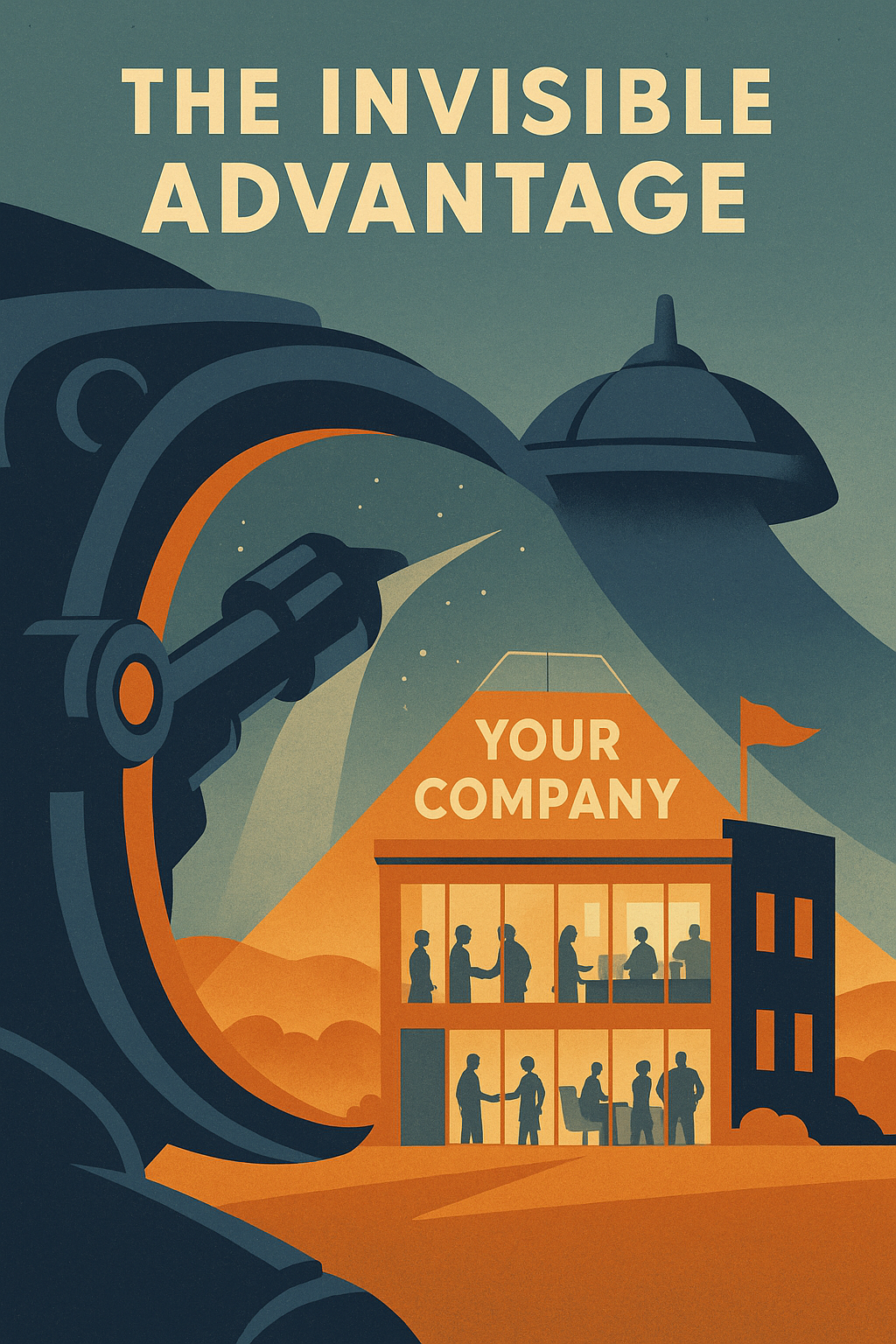
Measuring the Impact of Your Employer Brand
In the high-stakes realm of aerospace and government contracting, where hiring the wrong candidate can have national security implications and onboarding the right one often requires months of clearance and onboarding, the performance of your employer brand is too critical to leave to guesswork.
Building a strong employer brand experience is one part of the strategy—measuring its effectiveness is the other. Without consistent evaluation, it’s impossible to determine whether your branding investments are actually helping you attract and retain top talent or simply adding noise to an already competitive market.
Metrics to Watch
To measure impact, look at both qualitative and quantitative data sets across the full employee lifecycle—from potential candidates to current employees. Here are the key metrics every employer brand leader should track:
Turnover rates: A spike in voluntary exits can signal a disconnect between your employer brand promise and the actual employment experience.
Application rates: Are the right candidates applying for your roles? Monitor changes in both volume and quality post-campaign.
Glassdoor & Indeed scores: Your corporate culture is visible here. Reviews reveal gaps between internal reality and external brand perception.
Internal engagement metrics: Use pulse surveys, intranet analytics, and participation in employee resource groups to gauge how well your internal employer branding resonates.
Referral rates: A rising number of employee referrals often signals a high degree of employer brand identification—your people believe your company is a great place to work.
Tools to Use
To bring clarity to these data points, leverage tools specifically designed to track and analyze employer brand performance:
Brandwatch: For monitoring external brand sentiment and spotting brand-related mentions across social platforms.
LinkedIn Talent Insights: Use it to benchmark your employer attractiveness against industry leaders like Lockheed Martin and uncover trends in candidate interest across business areas and regions.
Google Search Console: Track how well your career site ranks for job-related search queries, including high-intent keywords like “security clearance aerospace jobs” or “veteran-friendly defense contractors.”
Together, these tools help quantify the relationship between employer branding and talent acquisition results—providing actionable feedback to iterate and improve.
Strategic Alignment
Finally, make sure all measurement efforts loop back into your talent strategies and communications plans. This is where aligning the employer brand with actual organizational performance becomes a strategic advantage. Your metrics should guide adjustments to content, tone, messaging, and recruitment channel prioritization.
An elite employer brand isn’t just seen or heard—it’s felt. And the only way to know if your message is resonating with military talent, engineers, or cleared professionals is to measure what matters—consistently, rigorously, and across every stage of the talent journey.
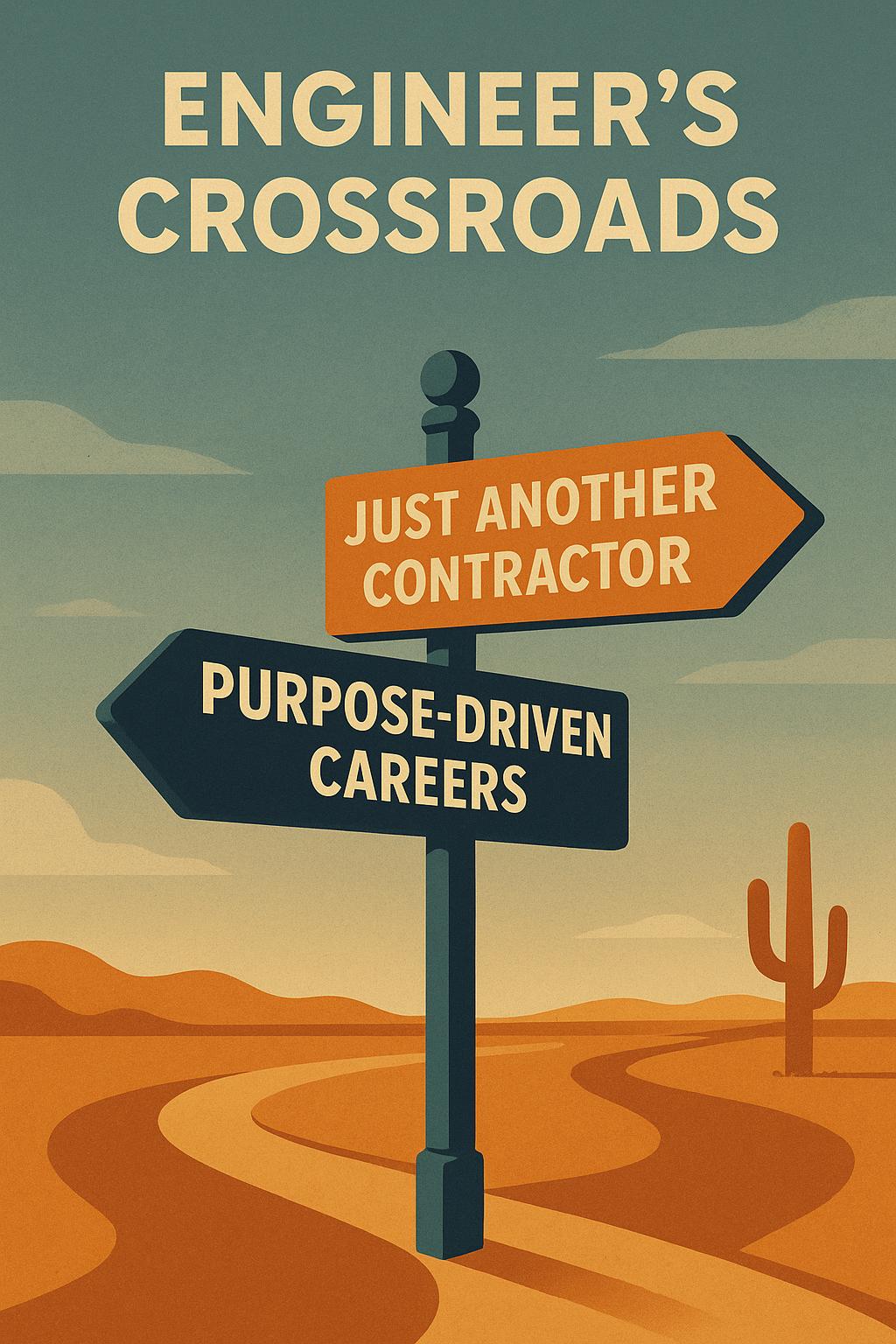
Conclusion
In today’s competitive landscape, with talent pipelines tightening, clearance requirements increasing, and top engineers fielding multiple offers, the companies that win are those that offer more than a job—they offer purpose, culture, and identity.
From Lockheed Martin’s purpose-driven storytelling to the power of internal branding and tactical recruitment marketing, we’ve seen how aligning your employer brand with your mission can transform your ability to attract and retain top talent. This is especially critical when recruiting military talent, candidates with security clearances, or technical professionals navigating complex government systems.
Whether you’re an emerging defense tech startup or a legacy contractor rethinking your people strategy, the message is the same: Your employer brand experience must reflect the values, ambition, and trustworthiness that define your work. That includes consistent messaging, culture-aligned EVP, and a feedback loop that turns data into continuous improvement.
At the intersection of brand, purpose, and performance lies your biggest competitive advantage. It’s time to take control of your reputation, resonate with both current and potential employees, and shape a workplace culture that drives results—externally and internally.
So, what’s your next move? Start by auditing your employer messaging. Look at your career site, your internal newsletters, your Glassdoor profile. Do they tell the story your talent needs to hear?
If not, it’s time to rewrite the narrative—because in aerospace and defense, the right people don’t just build your business. They secure its future.

